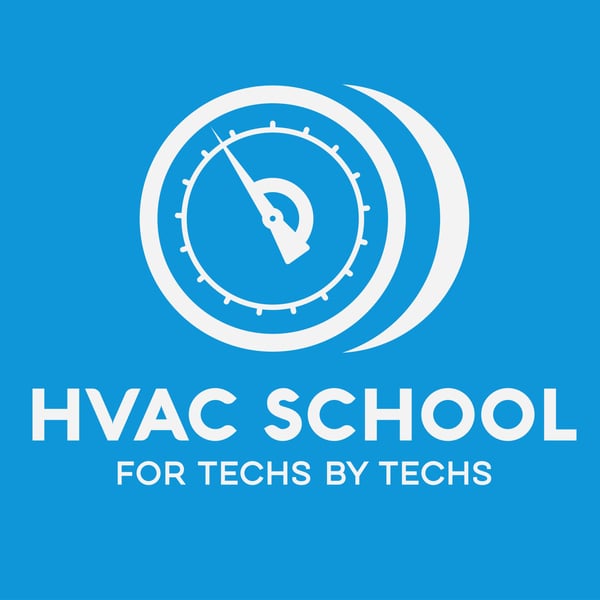Nylog, Oil? Where does it go? - Short #238
HVAC School - For Techs, By Techs
Bryan Orr
4.8 • 985 Ratings
🗓️ 29 April 2025
⏱️ 7 minutes
🧾️ Download transcript
Summary
In this short podcast, Bryan answers a listener-submitted question about Nylog, oil, and where you put them when you're making flares.
Nylog is a thickened refrigerant oil (which is either POE for Nylog Blue or mineral oil for Nylog Red), and it's miscible with the refrigerant and moves with it through the circuit. You don't want to put excess Nylog on valves, but a small amount won't do harm. There are a lot of concerns about Nylog voiding the warranty, but it doesn't actually do that because it's nearly impossible to prove that Nylog caused the issue.
Like oil, Nylog helps connections fit together (even threaded connections) and prevents galling. However, oil and Nylog also reduce friction, which will affect your torque specs when you use a torque wrench to tighten a connection. You don't need to tighten it as much, as you risk overtightening otherwise.
When you apply Nylog, put a little bit on the front and back face of a flare (and the cone of the flaring block if you wish). You can put a small bead on the threads, but it's not an issue as long as you stay aware of your adjusted torque specs (low range). In our experience at Kalos Services, Nylog is particularly useful under vacuum and has helped us make high-quality flares that last a long time. Remember: Nylog is NOT leak lock, and it's not a traditional thread sealant.
Have a question that you want us to answer on the podcast? Submit your questions at https://www.speakpipe.com/hvacschool.
Purchase your tickets or learn more about the 6th Annual HVACR Training Symposium at https://hvacrschool.com/symposium.
Subscribe to our podcast on your iPhone or Android.
Subscribe to our YouTube channel.
Check out our handy calculators here or on the HVAC School Mobile App for Apple and Android
Transcript
Click on a timestamp to play from that location
| 0:00.0 | Hiby-Gee's. This is the HVAC school podcast. I'm Brian, and I've done a lot of these podcasts now. |
| 0:10.0 | I don't know, like 700 or something like that. It's like, ooh, it's a lot. And the reason why I bring |
| 0:15.4 | that up is because the question that we got today is one that, man, have I gotten a lot. |
| 0:20.0 | It is one of the most controversial |
| 0:21.6 | come around over and over and over again topics, and I feel like I've said it a million |
| 0:26.1 | times, but you know what? It was asked, so we are going to answer it right after we hear |
| 0:31.2 | from our sponsors. Copeland and the Copeland mobile app. Get full access to Copeland's online |
| 0:37.2 | product information database on any device, any place. |
| 0:41.0 | And try out the new Copeland AI chatbot. |
| 0:45.2 | Cross-reference compressors and find local inventory, all on the Copeland mobile app. |
| 0:50.3 | Refrigeration technologies at refrigetec.com. |
| 0:54.5 | Carrier and Carrier.com? |
| 0:56.6 | The ESCO Institute, with over 200 HVACR training solutions, courses, webinars, and simulators, |
| 1:02.9 | find out more by going to escogroup.org. |
| 1:07.8 | All right, so here's the question. |
| 1:09.6 | This was at HVAC school from Anonymous. |
| 1:12.6 | The real question is where do you put this stuff regarding nilog? |
| 1:16.2 | So we're talking about nilogue here. |
| 1:17.8 | The real question is where do you put this stuff? |
| 1:19.9 | Specifically with flare connections. |
| 1:22.3 | Need verification so I can end some open arguments. |
| 1:26.5 | Well, heaven's sake. |
... |
Please login to see the full transcript.
Disclaimer: The podcast and artwork embedded on this page are from Bryan Orr, and are the property of its owner and not affiliated with or endorsed by Tapesearch.
Generated transcripts are the property of Bryan Orr and are distributed freely under the Fair Use doctrine. Transcripts generated by Tapesearch are not guaranteed to be accurate.
Copyright © Tapesearch 2025.

